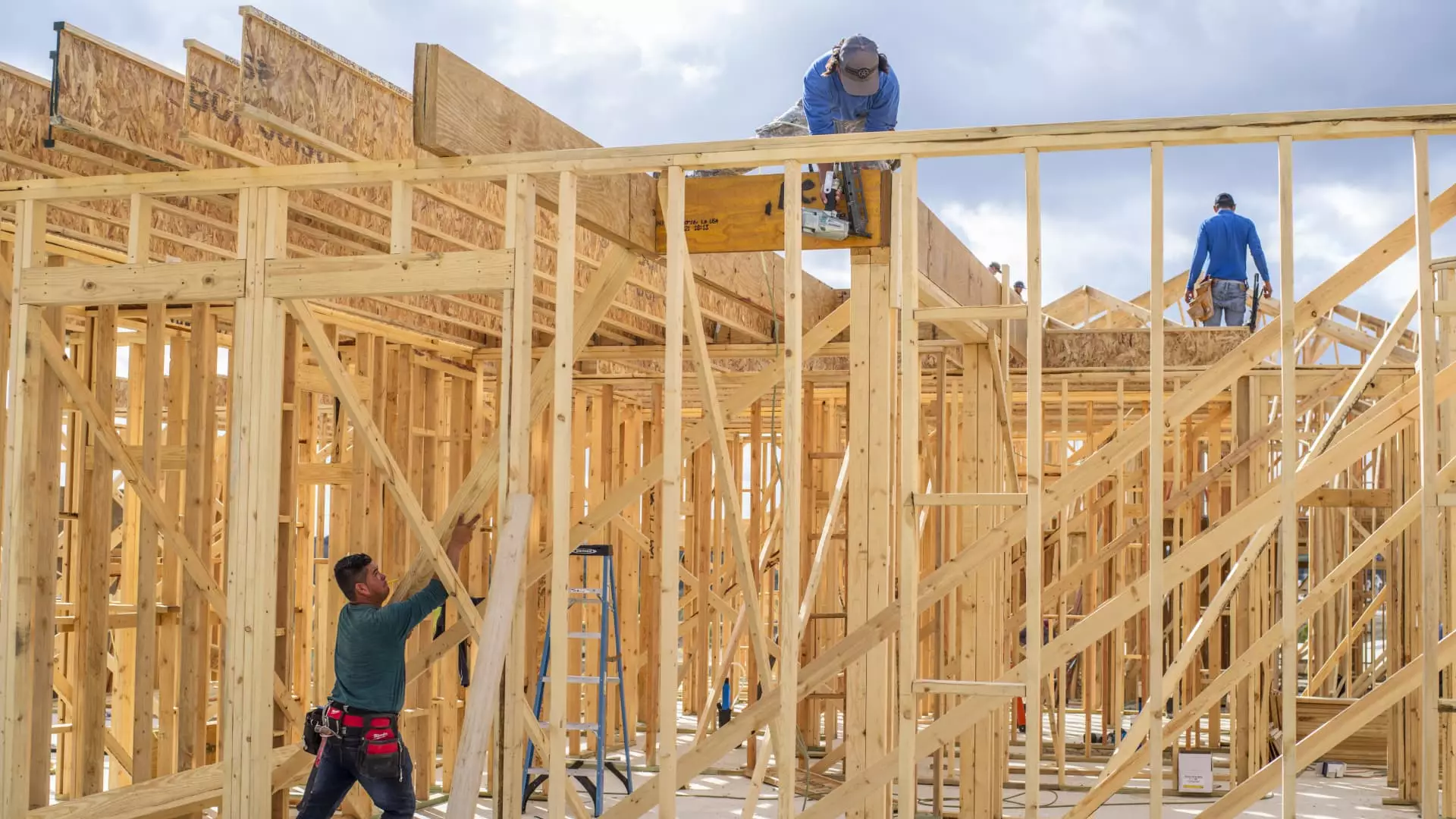In February, the landscape for single-family homebuilders in the United States took a decidedly negative turn, with sentiment reaching its lowest point in five months. Reflecting deep-seated concerns about rising costs due to tariffs, the National Association of Home Builders’ Housing Market Index (HMI) saw a significant decline, dropping 5 points to a reading of 42. To place this figure in context, any score below 50 indicates negative sentiment in the market, which starkly contrasts with the 48 recorded during the same time last year. This decline has left builders apprehensive about their prospects for the future.
Several elements contribute to this downturn in builder sentiment, most notably the potential impact of tariffs on construction materials. According to NAHB Chairman Carl Harris, builders are eagerly anticipating pro-development policies, particularly those focused on regulatory reform. However, the uncertainty surrounding policies, coupled with escalating costs, has led many to reassess their expectations for 2025. Notably, the HMI covers three pivotal components: current sales conditions, buyer traffic, and sales expectations. Each of these key areas witnessed declines, with current sales conditions falling to 46 and buyer traffic sliding to a dismal 29. Most alarming, sales expectations for the coming six months dropped a staggering 13 points to 46, marking the lowest level since December 2023.
The housing market is currently grappling with elevated mortgage rates that hover over 7% for the 30-year fixed option—an increase from the 6% range observed previously. Coupled with rising home prices, this situation has further compromised affordability for potential homebuyers, leading to an erosion of demand. On top of these financial pressures, impending tariffs on building materials are generating additional worry. According to NAHB chief economist Robert Dietz, a substantial amount of appliances (32%) and softwood lumber (30%) are sourced from international trade. This reliance compounds the uncertainty felt by homebuilders regarding their operational costs.
Despite a steady rise in builder sentiment since August, largely driven by the anticipation of lower mortgage rates, the recent data presents a stark contrast. Most concerning is the fact that single-family housing starts are trending downward compared to the previous year, even against a backdrop of a limited supply of existing homes for sale. As the spring market approaches, the significant dip in builder sentiment may lead to a further contraction in supply, potentially exacerbating the market’s issues.
Reports from several homebuilders indicate a declining buyer demand, with Ryan Marshall, CEO of PulteGroup, highlighting in a recent earnings call the impact of continued affordability challenges, despite actions taken by the Federal Reserve to lower short-term interest rates. The disconnect between rates and demand illustrates a concerning trend that builders must reckon with as 2025 approaches.
An interesting development noted by the NAHB is the decrease in the percentage of builders who reported lowering prices, dropping to 26% in February from 30% in January—the lowest since May 2024. This decline signifies a shifting market: incentives that previously attracted buyers are losing effectiveness as high prices and interest rates weed out potential purchasers. When buyers feel priced out of the market, no incentive can bridge that gap. Builders face the sobering reality that their strategies to stimulate demand may now result in diminishing returns.
The current state of the housing market reflects a complicated interplay of rising costs, regulatory uncertainty, and affordability issues that are constraining buyer demand. As builders navigate these turbulent waters, their capacity to adapt to the evolving economic climate will ultimately determine the health of the housing market in the years to come. As sentiment remains low, the road ahead appears increasingly complicated for those in the homebuilding industry.

